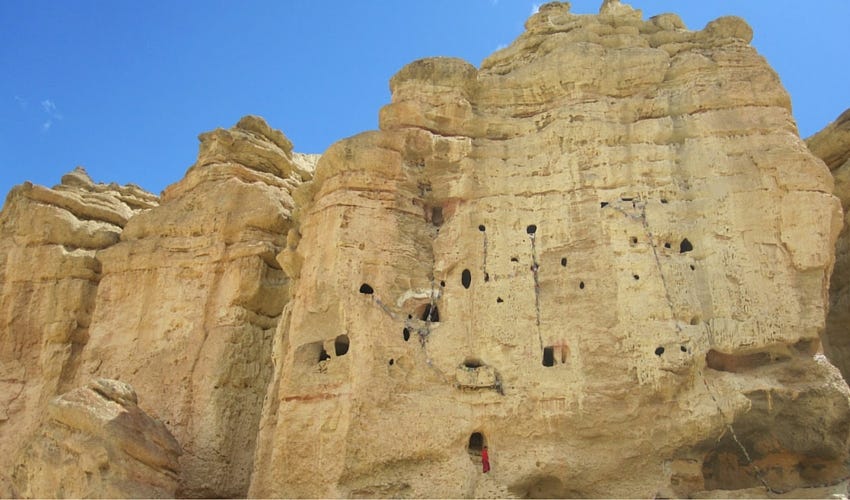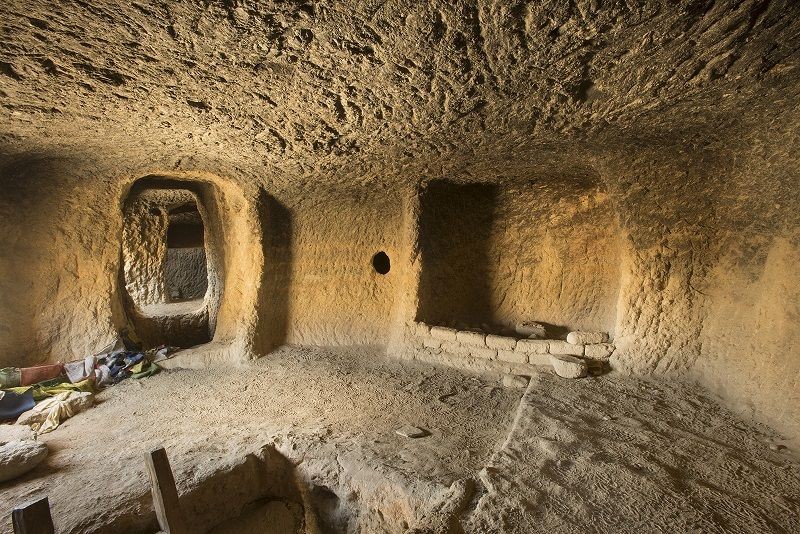The Caves of Mustang, Nepal: A Journey into the Heart of Mystery and History

Nestled in the arid and remote landscapes of northern Nepal, the Caves of Mustang stand as silent witnesses to centuries of human history, spirituality, and artistic expression. These enigmatic caves, scattered along the cliffs of the Kali Gandaki River Valley, have long intrigued explorers, historians, and adventurers. In this detailed article, we embark on a captivating journey to uncover the secrets and significance of the Caves of Mustang.
The Land of Mustang
Mustang, often referred to as the “Forbidden Kingdom,” is a rugged and isolated region in the Himalayas, adjacent to the Tibetan plateau. Its geographical isolation has preserved its ancient culture, making it a haven for those seeking a glimpse into Nepal’s past. This region, situated on the ancient Salt Route between Tibet and Nepal, has a history that dates back over a thousand years.
A Remarkable Architectural Feat
The Caves of Mustang, known as “sky caves,” are remarkable not only for their historical significance but also for their architectural marvels. These man-made caves are carved into the cliffs of the Kali Gandaki Valley, some at dizzying heights, creating a striking juxtaposition of human-made structures against the natural landscape. The caves range from simple shelters to elaborate chambers with ornate frescoes, sculptures, and intricate carvings.
Theories Surrounding their Origins
Despite their undeniable cultural and historical importance, the exact origins and purpose of the Mustang caves remain shrouded in mystery, giving rise to various theories:
- Monastic Retreats: Some scholars believe that the caves were used as monastic retreats, where monks sought solitude and a deeper connection with their spiritual practices.
- Storage Facilities: Others suggest that the caves served as storage facilities for valuable goods, such as salt, grains, or precious metals, given Mustang’s role in the Salt Route.
- Burial Chambers: A theory proposes that the caves may have been used as burial chambers, which could explain the presence of intricate art and symbols inside.
- Religious Significance: The Mustang region has a rich religious history, with influences from Buddhism and Bon. The caves may have served as sites for religious rituals and ceremonies.
- Protection from Invaders: Some caves are strategically located high above the valley floor, suggesting they may have been constructed as defensive positions during times of conflict.
Intricate Frescoes and Art
One of the most remarkable features of the Mustang caves is the intricate art and frescoes that adorn their interiors. These paintings depict scenes from Buddhism, Bon, and daily life in ancient Mustang. They provide valuable insights into the culture, beliefs, and daily life of the people who inhabited the region centuries ago. The preservation of these art forms is a testament to the enduring power of human creativity.

Preservation Efforts
In recent years, efforts have been made to document, preserve, and protect the Caves of Mustang. The government of Nepal, in collaboration with international organizations and local communities, has recognized their cultural significance and historical value. Conservation projects aim to safeguard the caves and the precious art they contain, while also making them accessible to researchers and visitors interested in unraveling their mysteries.
Challenges and Ongoing Exploration
The exploration of the Mustang caves is not without its challenges. The region’s remote location, harsh terrain, and altitude require a significant degree of preparation and determination. However, advances in technology, such as drones and 3D modeling, are helping researchers and explorers document and study these ancient structures.
The Caves of Mustang, Nepal, are not merely relics of the past but windows into the complex tapestry of human history and culture. Their mysteries and significance continue to intrigue and inspire those who venture into their depths. As we uncover their secrets, we gain a deeper appreciation for the enduring legacy of the people who once called this remote Himalayan region home. The Caves of Mustang stand as a testament to the resilience of human creativity, spirituality, and the enduring allure of the past.